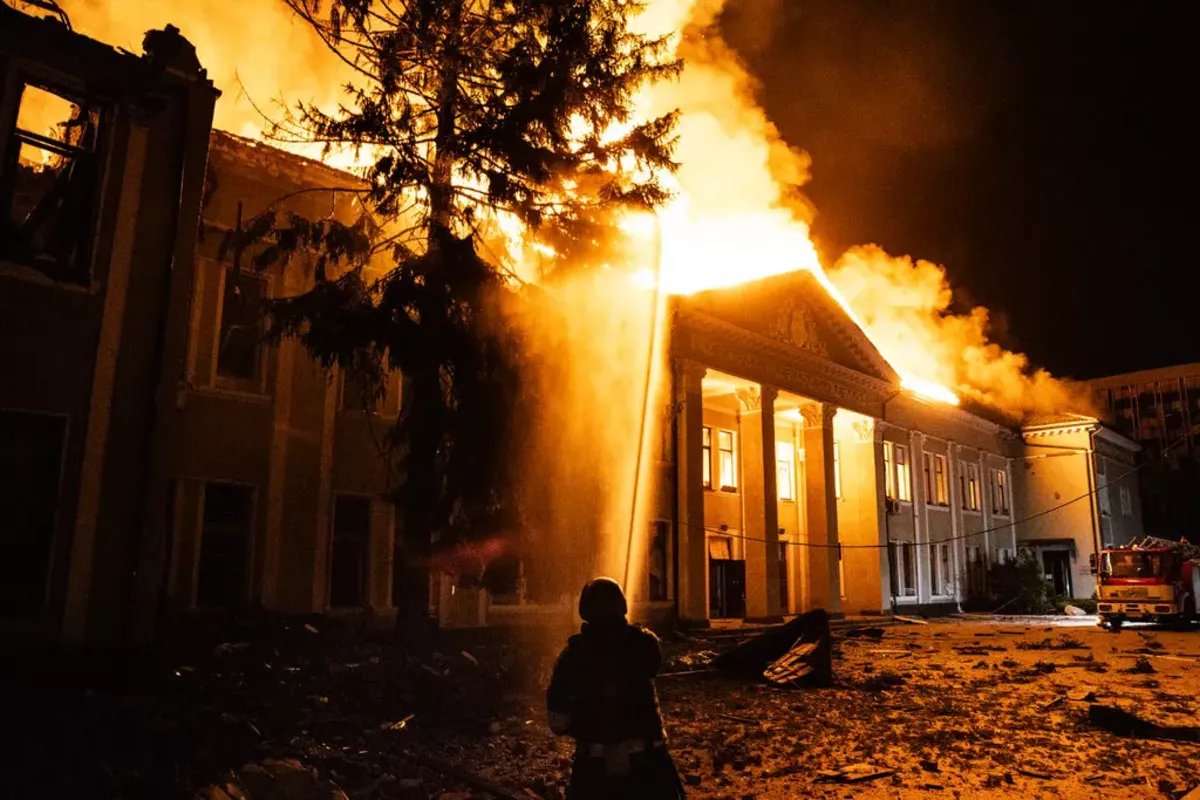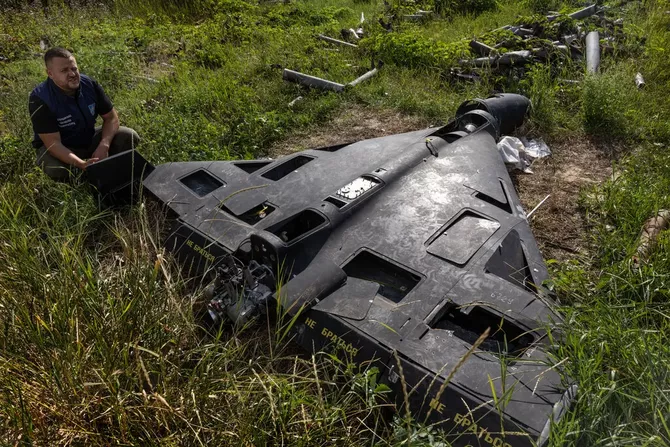
photo: The New York Times
Ukraine is facing mounting challenges defending against the growing swarm of attack drones Russia has deployed in its ongoing assault.
Three years ago, Russia made global headlines when it first introduced self-destructing drones from Iran, launching 43 in a single strike. This month, in just one night, over 800 explosive drones and decoys crossed into Ukraine, The Caspian Post reports via foreign media.
The surge reflects a massive increase in Russian production of one-way attack drones, prioritized by President Vladimir V. Putin and now manufactured domestically at two main facilities. The Kremlin has also expanded production of smaller tactical drones used on the front lines, enlisting regional governments, factories, and even high school students to meet demand.
This combination of large-scale production, new technology, and evolving tactics has created a formidable challenge for Ukraine, which initially held an advantage in drone warfare that Moscow has since eroded. Russia uses attack drones alongside missiles and decoys to overwhelm air defenses and launch massive strikes on weapons production sites, energy infrastructure, and cities. Kyiv has made significant advances with its own deep-strike drone attacks, including a recent hit on a major oil refinery near St. Petersburg, but Russian attacks are larger, more sophisticated, and continually force the Ukrainian military to adapt.
The threat has begun spilling into NATO territory. Last week, at least 19 Russian drones entered Poland, with only a few intercepted, and Romania reported intercepting a drone in its airspace amid Russian attacks on neighboring Ukraine. These incidents illustrate the difficulty the Western alliance would face in defending against future large-scale drone assaults, which could number in the thousands.
“The war has reached another inflection point in how drones are being used, both at the front line and in the strike campaigns being conducted by Russia and Ukraine,” said Michael Kofman, a senior fellow at the Carnegie Endowment for International Peace.
While Russia claims its one-way attack drones target war-related facilities, they have also struck hospitals, schools, apartment buildings, and playgrounds, killing civilians. The attacks sow terror, often striking cities far from the front lines, frequently in the middle of the night, making it almost impossible to sleep. The intent is to demoralize Ukrainians and weaken their will to endure the conflict.
Mr. Kofman noted the difference between smaller frontline drones used to advance forces and one-way attack drones deployed for bombardment. “Despite all the damage that is being done, from what we know of efforts to win a war through bombardment, on its own it is not likely to succeed,” he said. “This is no blitz, and the blitz wasn’t successful for Germany either.”

photo: The New York Times
Russian drone attacks intensified last September, the first month Moscow deployed more than 1,000 drones, according to data from The New York Times based on Ukrainian Air Force figures. This year, numbers have soared: more than 34,000 attack drones and decoys have entered Ukraine in 2025 alone-nearly nine times the amount from the same period last year. Ukraine says it has intercepted 88 percent, down from nearly 93 percent in 2024.
During the first weekend of this month, Russia sent a record 810 drones and decoys in one night. Kyiv claimed to have shot down about 92 percent, leaving 63 drones that reached targets, 54 of which hit 33 locations.
Behind these numbers is a revolution in Russian drone production. Mr. Putin has signaled at the highest level that drones are a national priority, mobilizing public and private resources to create a drone manufacturing network. At a recent economic forum in Vladivostok, nearly every Russian region displayed its drone production capabilities. Students and foreign workers are involved, and Russia has relied on technology and components from Iran and China. Analysts estimate Russia can produce roughly 30,000 Iranian-style attack drones annually, with some projecting that figure could double in 2026.
“The answer is simple and straightforward,” said Mykola Bielieskov, a military analyst at Ukraine’s National Institute for Strategic Studies. “They started from maybe hundreds a month, then 2,000 to 3,000 a month in the first quarter of this year, now with 5,000 to 6,000 a month. For sure, more of them are going to get through our air defenses.”
The drones themselves have evolved, featuring improved guidance systems, better resistance to jamming, and new types of warheads. Russia has also adapted its tactics, sending drones in swarms, confusing paths, and deploying numerous decoys made of painted foam or plywood, sometimes armed with small warheads. By flying over forests and rivers instead of open fields, drones are harder for Ukrainian defenses to intercept, and urban targets make shoot-downs more dangerous due to civilian risks.
“So they fly higher,” Mr. Bielieskov said. “They fly in waves or in packs; it depends how they are programmed. So basically it’s about the scale. It’s about changes in Russian tactics. It’s about changes in guidance.”
Ukraine has responded with a combination of air-defense units, mobile pickup teams equipped with machine guns, electronic jamming, and low-cost interceptor drones. Western high-tech systems primarily protect major cities and infrastructure from missiles. Konrad Muzyka, a military analyst with Rochan Consulting, noted, “I think they are shooting down fewer numbers of drones than they report on.”
The conflict has become a continuous game of adaptation. As Russia flies drones higher, Ukraine employs radar-equipped interceptor drones, though deployment remains limited. “If they can scale that, they can probably address the saturation problem over time,” said Mr. Kofman. “It’s a matter of production and scaled deployment.”
On the frontline, Russia is closing the drone gap with Ukraine. There, it pioneered drones that evade jamming via miles-long fiber-optic connections, deployed the elite Rubicon unit, and plans to create a full Drone Forces branch. Mr. Kofman noted that Ukraine’s initial drone advantage “had diminished in recent months in light of Russia deploying its own elite drone formations and better organization in how they deploy drones.”
Share on social media